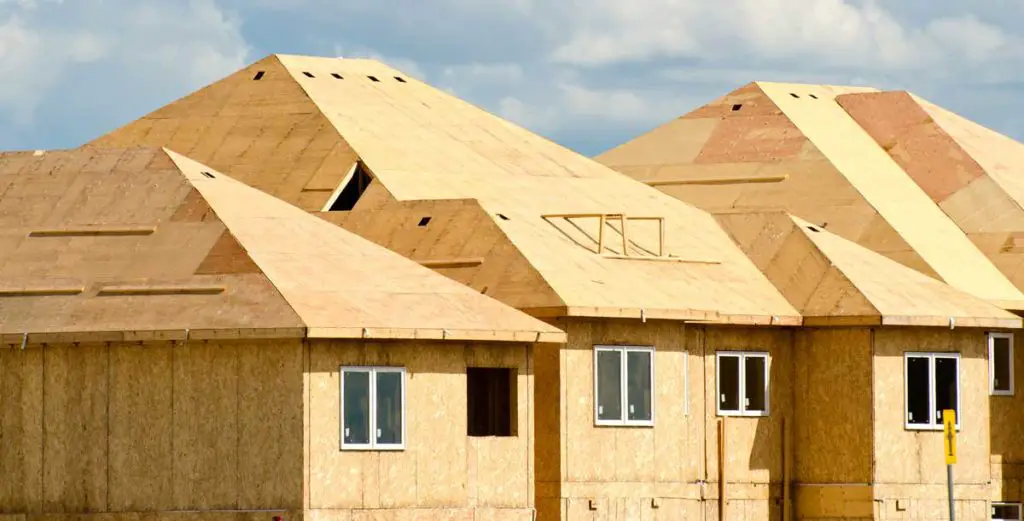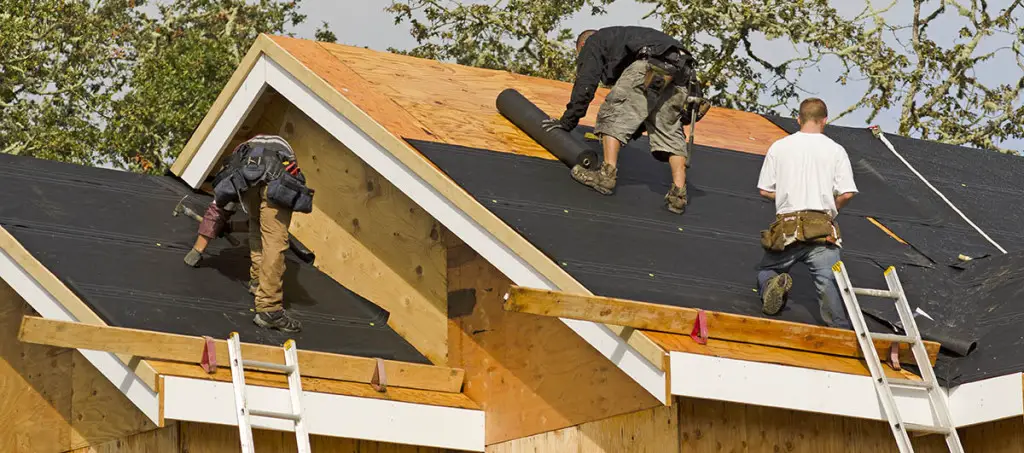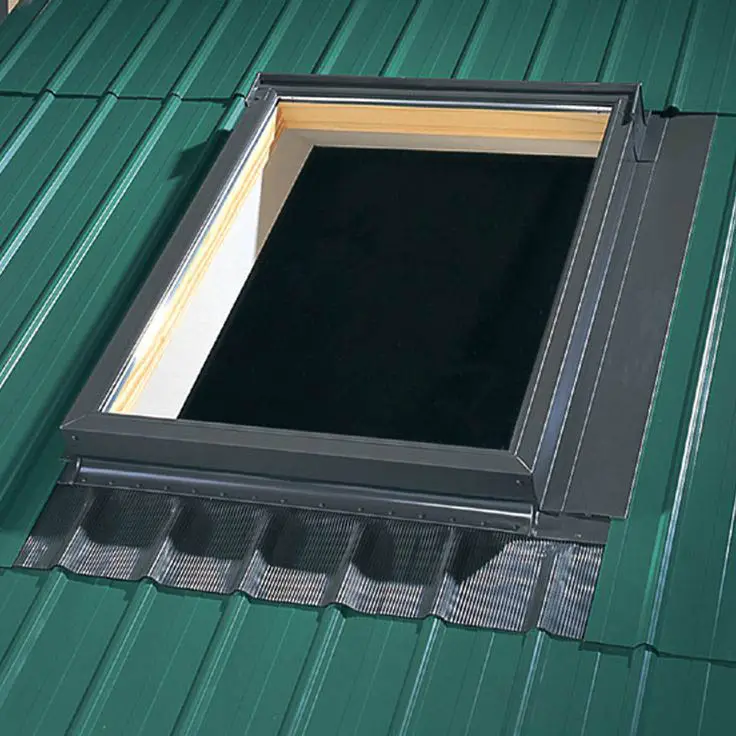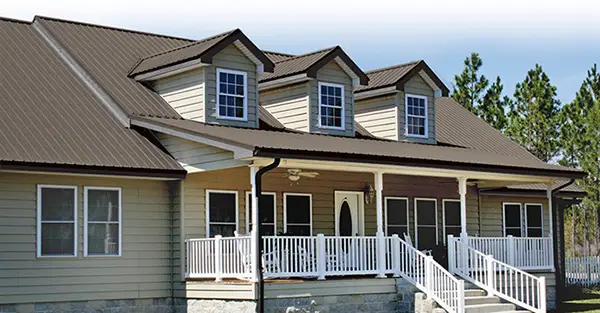Most residential homeowners think of their roofs as consisting of just a single part: shingles.
Contents
However, there are several roofing components that combine to form a waterproof protection system for your house, including roofing underlayment, metal flashing and rooftop sheathing.
The key thing to keep in mind is that each layer must be installed carefully as part of an integrated rooftop system.
Materials are typically installed from the bottom of the roof working towards the ridge, such that the lower layer will be overlapped by the next layer, which in turn will be overlapped by the next layer.
The exterior of your roof
By understanding this overlapping approach, it’s possible to understand several different parts of your roof and how each roofing component relates to every other element:
- Shingles
- Roofing underlayment
- Rooftop sheathing (also known as “decking”)
Layer 1: Sheathing
It’s best to start with the rooftop sheathing. This sheathing is typically made of either plywood or particleboard.
This sheathing is laid on top of the rafters of the structure and helps to create a rigid surface to support the following layers.
The rooftop sheathing is usually required by building codes because it can be a key element in protecting your house from water damage.
Since the sheathing is rigid, it provides a safe surface for attachments, such as nails.

Layer 2: Underlayment
Now that the sheathing has been laid down, the next layer to be added is the roofing underlayment. This is usually heavy felt or a felt-like material that can form a waterproof barrier for your house.
In older homes, there may or may not be an underlayment. However, in newer homes, an underlayment is typically required.

Layer 3: Shingles
Finally, the exterior layer exposed to the elements (wind, rain, snow, hail) is the shingle layer. In 80% of residential houses, shingles are made of asphalt or asphalt-composition materials.
On these asphalt shingles, tiny granules help to absorb any damage from the external elements.
For some homeowners, the classic asphalt shingle may not provide enough protection, so they might opt for ceramic tile, metal or slate roofs. Of course, changing to a different type of roof also changes the concept of “shingle.”
In the case of metal, for example, you also have the option to install large metal panels to each side of your sloping roof.
And, if you have a flat roof, you won’t have shingles either. Instead, you will usually have some sort of bitumen-composition roof that is installed as a single sheet to prevent any gaps for water flow.
However, even with a flat roof, the same basic principles apply: you will use an assortment of layers to create a barrier against moisture and water damage.

Other protective elements of your roof
If you look up at any roof, you will also probably see more than just shingles. For example, you might see a chimney or some other structure poking out.
These need to be waterproofed as well in order to protect your house from possible damage. Here’s a closer look at several other components of your rooftop system:
- Flashing – If you have vent pipes, chimneys or valleys on your roof, you need to protect them and seal them against damage. Flashing is simply metal placed around these structures to protect them from water. If you look at your roof, you will usually see this flashing in any roof valley or at any points where two vertical walls meet to form a joint.

- Gutter and downspout – The key role of a roof is to protect your house from water, and to make that possible, a gutter system is used. This gutter is essentially a piece of hollowed-out metal ringing your entire roof. At certain points along the wall there will be downspouts, which enable rainwater to run off a safe distance from your house. The downspout will be angled in such a way that water is not directed into your foundation or basement. The thing to keep in mind about gutters is that you have to clean them regularly in order to rid them of debris.

- Dormers – In some styles of houses, dormers are popular as a way of protecting windows that protrude from a roof, such as on the second floor of a home. A dormer is the entire structure (consisting of wall and roof) around the window. The most common type of dormer is the gable roof dormer.

Names for specific areas of your roof
Roofing contractors use a variety of terms to describe all the areas of your roof. These may sound like technical terms, but they are also actually very useful, everyday terms for thinking about the way your roof is constructed.
For example, the area that most people would probably call the “top” of their roof is what roofers call “the ridge.” This is the highest point of the roof, and is extraordinarily important in calculating measurements like pitch and slope.
There are several other terms that are useful to know:
- Valley – This is an internal angle formed by the intersection of two sloping roof planes.
- Hip – This is an external angle formed by the intersection of two sloping roof planes.
- Rafters – These are wooden beams that run from the top of the roof to the bottom.
- Truss – The truss is a framework comprised of wooden beams that helps to support the roof. The rafters, when combined together, help to form the truss.
- Fascia – This is the trim used to cover the eaves. If your home has gutters, the fascia is where the gutters are typically attached.
When you hear these terms used, you can be assured that your roofing contractors really know what they’re doing when they are up on your roof!
Conclusions
As you can see, there are several important parts of the roof. They are designed to work together to protect your home from any external damage. The shingles on a roof are very important, but there’s a lot more that goes into a well-designed roof system.
There are several layers to the system, with each providing a protective barrier against water, snow, and hail damage.
Last update on 2023-07-04 / Affiliate links / Images from Amazon Product Advertising API
